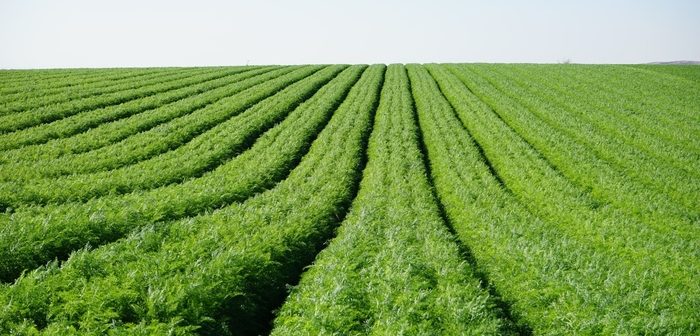With the onset of fairer weather across the UK, carrot growers are advised to keep a keen eye out for the first migration of virus-carrying aphids, with ProCam agronomist John McCulloch recommending a three-way programme of aphicide treatments to provide longevity of protection.
“As a result of the extended period of cold weather throughout April and May, carrot crops in some parts of the UK are as much as a month behind where they would typically be at this time of year,” John McCulloch explains. “Likewise, the first wave of aphids is also delayed by several weeks, but, with the weather suddenly turning decidedly warmer and drier, this means that the first migrations of virus vectoring aphids are likely to touch down imminently on younger, more susceptible crops.”
The main virus affecting carrots at this time of year is the Carrot Motley Dwarf complex which is caused by the combined infection by two viruses: Carrot red leaf virus and Carrot mottle virus.
“The Carrot Motley Dwarf complex virus is spread through carrot crops by infected aphids – predominantly the Carrot Willow Aphid – which transmit the viruses during feeding,” John continues. “It can affect seedlings as well as older plants with symptoms including a reddening and mottling of the leaves which results in stunted growth. The complex is also known to cause longitudinal splitting in the roots known as ‘kippering’.”
The extent of infections varies from year to year according to the harshness of the winter, with the recent period of extended cold weather delaying aphid migration from the willow trees, cow parsley and hogweed in which they overwinter.
“The recent change in the weather means we’re had some initial reports of aphid sightings, so growers need to be on their toes over the next week or 10 days to ensure they apply an appropriate aphicide as soon as the first aphids have been spotted.
“Forecasting tools such as that provided by the AHDB are a useful means of getting a rough idea of when aphids are likely to be active, but in my experience, nothing beats getting into the crop and turning leaves over to get a really accurate picture.”
Mr McCulloch warns that the window during which the first aphicide should be applied is particularly narrow, primarily because the virus can be transmitted exceptionally quickly from an infected aphid to a healthy plant.
“Unfortunately, the deadline for the use-up of any remaining stocks of Biscaya (thiacloprid), means growers no longer have access to a key insecticide. Thankfully however, Teppeki (flonicamid) can be used under an EAMU permit, with Movento (spirotetramat) and Flipper (fatty acids C7-C20) also available.
“All three provide useful activity against aphids, but they must be applied accurately to ensure maximum efficacy, with full leaf coverage absolutely essential. It is also worth remembering that although it provides good protection for up to 21 days, Teppeki will only protect the leaves it initially hits and therefore won’t protect any subsequent new growth. Similarly, although Movento is systemic both up and down the plant, it is not particularly effective in moving from new to old leaves so complete coverage is very important.”
Growers should also be aware that it can take up to 72 hours for aphids sprayed with Teppeki to die. “They will however stop feeding within an hour of application so don’t be too perturbed if you still see live aphids for two to three days post-application as they won’t actively be spreading the virus.”
Mr McCulloch recommends a three-stage protection programme, starting with an application of fatty acids as soon as the first aphids have been detected: “Flipper will kill aphids immediately upon contact but will only work on those aphids it hits at application. It should therefore be followed up by an application of Teppeki when the leaf canopy is more developed to provide ongoing protection.
“A subsequent spray of Movento, which needs to be metabolised within the plant for three to seven days in order for it to work effectively, can then be applied towards the end of this period to protect any subsequent growth. An additional application of Teppeki can also be applied as the crop matures to ensure ongoing protection against any late-season aphid migrations.”




